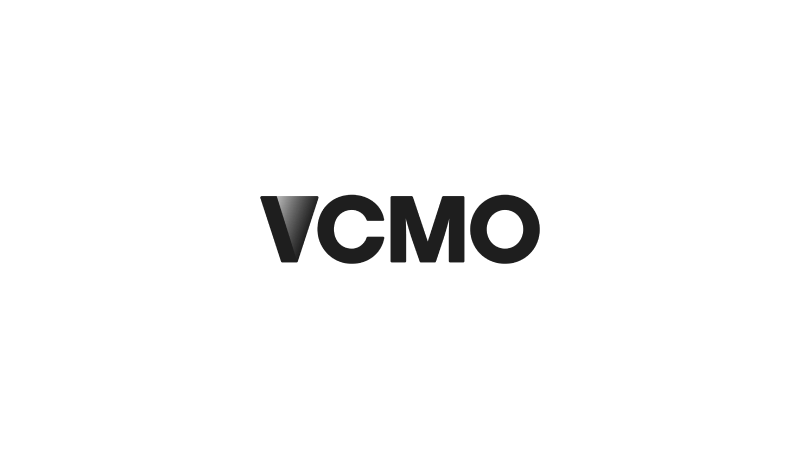The rise of the Virtual CMO: clarity on the model, benefits, and business impact.
Introduction: The Rise of the Virtual CMO
Over the last decade, marketing leadership has undergone a structural shift. As businesses grapple with faster cycles of change, constrained budgets, and dispersed teams, the model of a full-time Chief Marketing Officer (CMO) is increasingly out of reach for many. The demand for strategic leadership, however, has never been greater. Into this space has stepped the Virtual CMO—a senior marketing executive who delivers high-calibre leadership remotely, on a part-time basis.
The rise of the Virtual CMO is not simply a product of post-pandemic remote work. It reflects a deeper trend towards flexibility in executive hiring and the recognition that growth-critical expertise can be delivered digitally without sacrificing effectiveness. Yet, for many CEOs and investors, the distinctions between a Virtual CMO, a Fractional CMO, and other outsourced leadership models remain blurred. This article aims to clarify those differences, assess where the Virtual model adds most value, and guide decision-makers on whether this approach fits their growth strategy.
“Virtual CMOs are redefining executive leadership—proving that proximity is no longer the prerequisite for impact. What matters is strategic clarity, not postcode.”
Rachael Wheatley - Chartered Fractional CMO, VCMO
Virtual CMO – Its Definition
A Virtual CMO (VCMO) is a highly experienced marketing executive who works remotely with businesses on a part-time or flexible basis. Their role is to lead and shape the strategic direction of your marketing function — typically without being on payroll or physically embedded in your team.
Just like a traditional CMO, a Virtual CMO takes ownership of your brand, messaging, marketing performance, and commercial alignment. But unlike a permanent hire, they do so with greater flexibility, often serving multiple clients simultaneously, and always delivering value without the overheads of a full-time executive.
This model is especially attractive to businesses that need top-tier marketing leadership but don’t have the budget, need, or appetite for a permanent C-level hire.
Virtual vs. Fractional: Understanding the Distinction
The terms “Fractional CMO” and “Virtual CMO” are often used interchangeably, but they are not identical. Both represent senior marketing executives working on a part-time or retained basis. Both are typically engaged to provide strategy, leadership, and transformation without the full-time overhead of a permanent hire.
The key difference lies in how the engagement is delivered. A Fractional CMO is often embedded within the client organisation, working on-site for part of their time. They attend leadership meetings in person, build relationships with teams face-to-face, and operate almost as an in-house executive—just not full-time. By contrast, a Virtual CMO delivers the same calibre of leadership but entirely remotely. They leverage digital collaboration tools, video conferencing, and cloud-based reporting systems to guide marketing strategy without physical presence.
This distinction is not trivial. For businesses seeking deep cultural integration or leadership visibility within the office, the Fractional model may be preferable. For firms that are distributed, digital-first, or seeking a cost-effective executive solution without geographic constraints, the Virtual CMO provides a compelling alternative.
Find out more in our article: What is a Fractional CMO?
Key Differences at-a-glance:
Which One Do You Need?
If your business is remote-first, leans on digital collaboration, or needs strategic marketing support without the expectation of regular in-person presence, a Virtual CMO is likely the best fit.
If your business needs a leader who can be on-site periodically, integrate deeply with teams, and possibly lead across departments (sales, product, operations), then a Fractional CMO might be the stronger choice.
Read more in our article: What's the Difference Between a Fractional CMO & Virtual CMO?
“If you care more about outcomes than office presence, the Virtual CMO model is a smart move. It’s not about where your CMO sits—it’s about what they deliver and how seamlessly they integrate into your leadership rhythm.”
Who Benefits from a Virtual CMO?
The appeal of a Virtual CMO extends across multiple business contexts. Small and medium-sized enterprises, often limited by headcount and budget, gain access to board-level marketing expertise without the overhead of a full-time executive. Start-ups in early growth stages, where every decision carries outsized consequences, can harness a Virtual CMO’s experience to define positioning, sharpen brand narratives, and optimise demand generation.
Non-profit organisations also find value in the model. With finite resources, they often lack internal marketing leadership but cannot afford to compromise on brand visibility or stakeholder engagement. A Virtual CMO enables them to strengthen fundraising, advocacy, and community presence with efficiency.
Perhaps most significantly, established companies undergoing transition—mergers, acquisitions, rebrands, or international expansion—benefit from the objectivity and agility of a Virtual CMO. In such scenarios, internal teams are often too close to legacy models or overwhelmed by execution. The remote leader provides an external lens, guiding strategy with independence while managing implementation through digital channels.
Which Businesses Are Best Suited to a Virtual CMO?
Virtual CMOs aren’t just a stopgap solution; they’re a strategic fit for a range of businesses that need high-level marketing leadership without the overhead or permanence of a full-time hire. Here’s where they deliver the most value:
- SMEs With Growing Pains - Small and medium-sized businesses often hit a ceiling when marketing becomes too complex for junior staff but doesn’t yet justify a full-time CMO. A Virtual CMO bridges this gap — bringing structure, focus, and strategic oversight to fuel the next stage of growth.
- Startups Scaling Rapidly - Startups navigating product-market fit, brand positioning, or investor expectations need senior marketing leadership — fast. A Virtual CMO provides founder-level support without equity dilution or excessive headcount.
- Companies in Transition - Whether undergoing a rebrand, merger, leadership shift or new market entry, transitional periods create both opportunity and risk. A Virtual CMO helps steady the course with clarity, messaging alignment, and change management support.
- Businesses With No Marketing Leadership - For companies with executional marketing staff but no strategic leader, a Virtual CMO can elevate performance, mentor the team, and ensure spend is delivering ROI — often improving efficiency and reducing waste.
- Investor-Backed Businesses Under Pressure to Perform - Investors and boards want strategic rigour. A Virtual CMO strengthens go-to-market readiness, improves reporting, and helps build marketing infrastructure aligned with growth targets — making marketing an asset, not a cost centre.
“For startups and growth firms, Virtual CMOs act as accelerators. They bring not only frameworks and strategy but also the lived experience of scaling businesses through the turbulence of early growth.”
Lydia McClelland - Chartered Fractional CMO, VCMO
The Business Advantages of Hiring a Virtual CMO
The advantages of a Virtual CMO mirror those of the broader fractional model but are accentuated by remote delivery. Cost-efficiency is an obvious draw: businesses pay for strategic leadership without bearing the salary, benefits, and long-term liabilities of a permanent CMO. Equally important is access to a wider talent pool. By decoupling leadership from location, companies can hire the best expertise regardless of geography.
Flexibility is another key advantage. Engagements can scale up or down based on commercial need, making the model particularly effective for businesses navigating uncertainty. Speed of onboarding is also improved, as the absence of relocation or office-based integration accelerates deployment. Perhaps most significantly, Virtual CMOs provide an external, unbiased perspective that challenges entrenched thinking and introduces best practices drawn from multiple industries.
Key Considerations Before Hiring a Virtual CMO
While the benefits are compelling, businesses must approach Virtual CMO engagements with clear-eyed due diligence. Alignment with business objectives should be explicit, with agreed deliverables and success measures defined upfront. The budget must be realistic, balancing cost efficiency with the recognition that high-calibre leadership commands premium fees.
Cultural fit is also critical. Even in a virtual model, chemistry with the leadership team matters. The ability to communicate clearly, integrate with existing teams, and build trust remotely cannot be assumed—it must be assessed during the hiring process. Equally, technology infrastructure plays a decisive role. Businesses must ensure that collaboration platforms, data systems, and reporting tools are in place to enable seamless remote leadership.
Finally, contractual clarity is essential. Scope, timelines, confidentiality, and termination clauses should be watertight, protecting both sides and ensuring that the relationship is structured for success.
For a deeper understanding read: How to Choose a Fractional CMO for Your Business: A Comprehensive Guide.
Conclusion: Is a Virtual CMO Right for You?
The Virtual CMO is more than a stopgap—it is a reflection of how modern businesses are rethinking leadership in an era of flexibility and digital-first operations. For companies that are distributed, cost-conscious, or moving at speed, the model provides access to strategic marketing leadership without the overhead of a permanent hire.
The decision, however, is not binary. Some organisations will benefit more from a Fractional CMO embedded on-site, driving culture and visibility in person. Others will find that a Virtual CMO provides exactly the agility and objectivity they require. The choice depends not on the label but on the business context, growth objectives, and leadership philosophy.
What is clear is that, whether on-site or remote, part-time marketing leadership has become a catalyst for growth. The businesses that embrace it early stand to gain a decisive competitive advantage.
Get in touch: If this article reflects what you’re experiencing, get in touch to explore whether fractional marketing leadership is the right fit for your business.
About VCMO
VCMO is a UK-based provider of fractional marketing services, supporting B2B SMEs—ranging from funded scale-ups to mid-tier and private equity-backed businesses—through key moments of growth and transformation. Its Chartered Fractional CMOs and SOSTAC® certified planners embed strategic marketing leadership into organisations navigating product launches, new market entry, acquisitions, and leadership gaps.
What’s a Rich Text element?
The rich text element allows you to create and format headings, paragraphs, blockquotes, images, and video all in one place instead of having to add and format them individually. Just double-click and easily create content.
- By following these tips, you can make sure you’re noticed on LinkedIn and start building the professional connections you need to further your career.
-

Static and dynamic content editing
A rich text element can be used with static or dynamic content. For static content, just drop it into any page and begin editing. For dynamic content, add a rich text field to any collection and then connect a rich text element to that field in the settings panel. Voila!
How to customize formatting for each rich text
Headings, paragraphs, blockquotes, figures, images, and figure captions can all be styled after a class is added to the rich text element using the "When inside of" nested selector system.


Ready to take your marketing to the next level? Let us help you get there.
Subscribe to Our Newsletter
Fractional Edge is our montly newsletter sharing expert opinion on the latest trends in fractional leadership, curated marketing content from leading sources, VCMO events, and much more. Subscribing is quick — just add your name and email.











.jpg)





